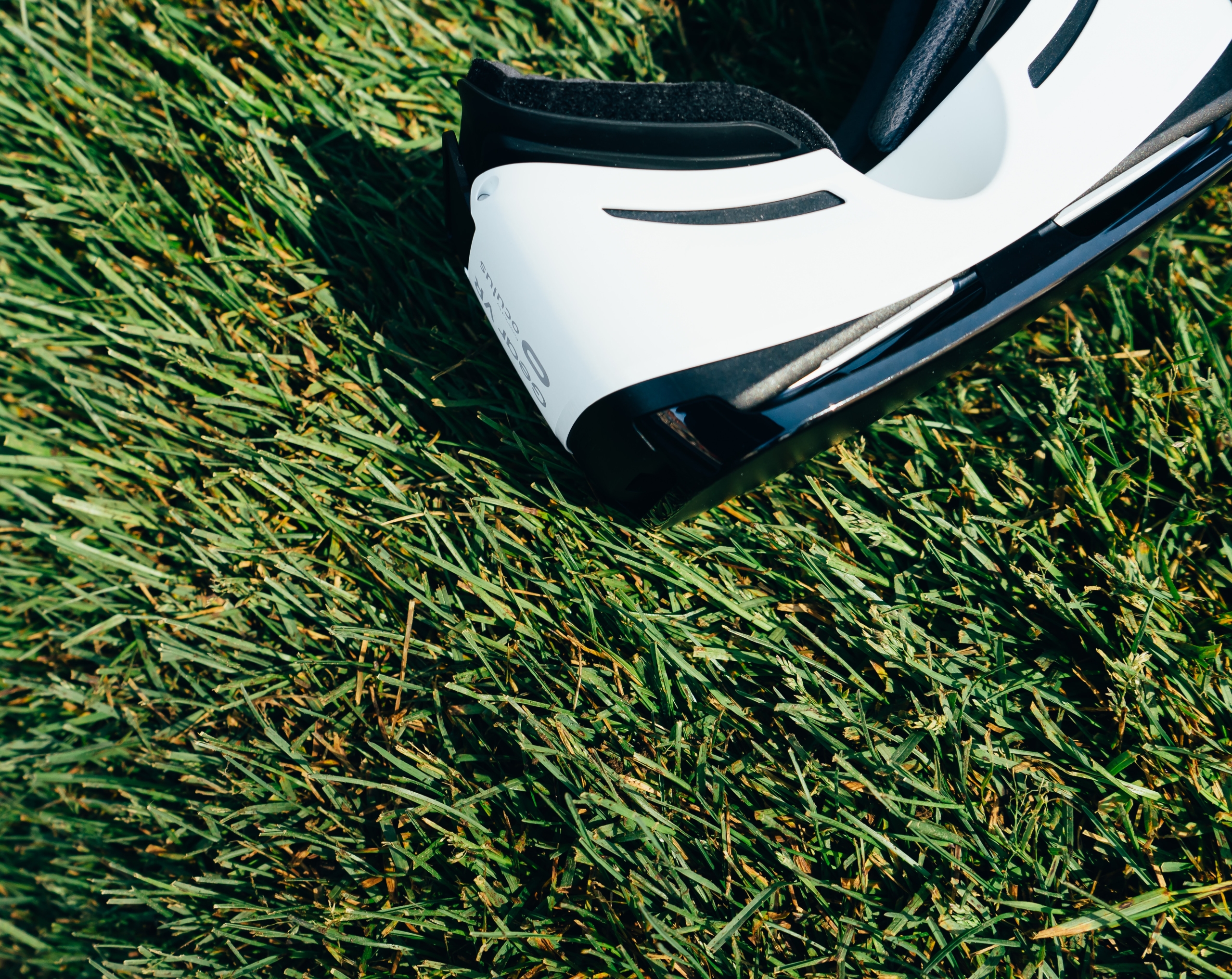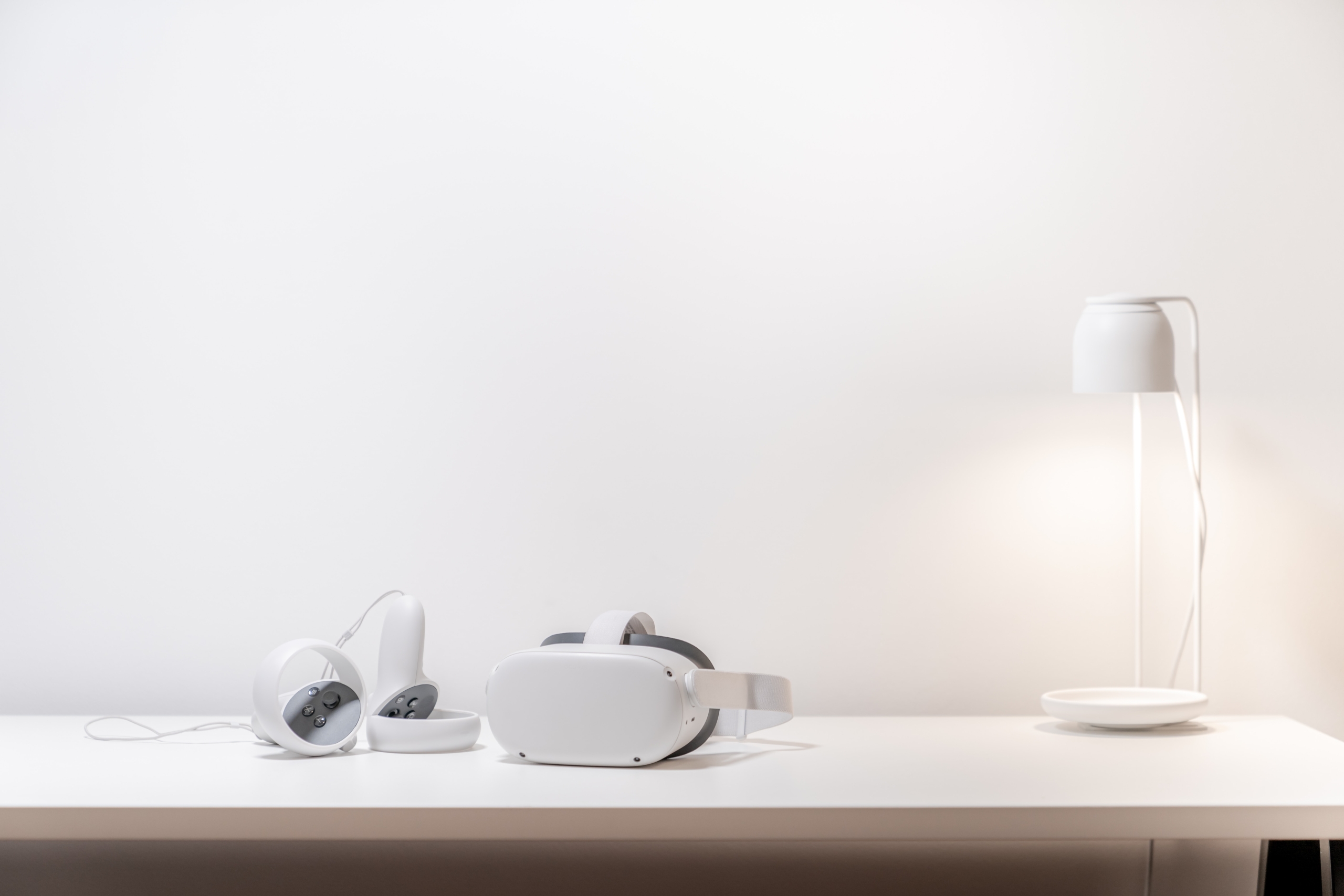As technology advances, both Augmented Reality vs Virtual Reality are becoming increasingly captivating and influential. Even though they both offer immersive virtual experiences, there are distinct factors that set them apart.
In this article, our 3D modeling studio will delve into the five major differences between augmented reality and virtual reality. By understanding their unique characteristics and applications, we can gain a deeper appreciation for these transformative technologies.
So, let’s dive into it!
#1. Environment Perception
AR enhances our real-world surroundings by overlaying digital information onto the physical environment. This integration blends the virtual and physical worlds, allowing users to interact with and observe their surroundings in real-time. AR is often used in industries such as education, gaming, and marketing.
VR, on the other hand, creates entirely synthetic environments that simulate sensory experiences. By immersing users in a digital world, VR provides a complete escape from reality. Users can explore these virtual environments without any connection to the physical world. VR finds applications in fields like gaming, entertainment, and training simulations.
By understanding this difference, we can see that Augmented Reality vs Virtual Reality aims to enhance the real world, or creates an entirely new world for users to explore.
#2. User Interaction
AR technology fosters a more interactive and dynamic user experience. Users engage with virtual content through their smartphones, tablets, or AR headsets. This interaction enables users to manipulate virtual objects, gather information, and engage with the digital enhancements seamlessly integrated into their real-world environment.
In contrast, VR relies on specialized headsets that completely immerse users in a virtual realm. These headsets incorporate motion tracking technology, providing users with a 360-degree field of view. By blocking out the physical world, VR allows users to navigate and interact with the virtual environment using specialized controllers or sensors.
#3. Level of Immersion
Augmented reality provides a partial immersion experience by blending virtual elements with the real world. Users can still see and interact with their physical surroundings while experiencing digital enhancements. This level of immersion allows AR users to seamlessly transition between the virtual and physical realms.
Virtual reality offers a higher level of immersion as users are fully enveloped in a simulated reality. By blocking out the physical surroundings, VR users can be transported to any virtual environment and feel fully present within it. This heightened sense of immersion makes VR an ideal medium for gaming, training simulations, and virtual travel experiences.
#4. Applications and Use Cases
AR applications are diverse and have extensive real-world implications. Industries such as healthcare, education, architecture, and retail are incorporating AR technology to enhance learning, improve workflows, and provide interactive experiences. AR can be used for navigation, object recognition, virtual try-on, and even medical imaging.
AR 3D models play a crucial role in many AR apps, as they allow designers to provide users with a realistic, interactive experience. CG artists are responsible for creating these models based on the app’s requirements.
AR has revolutionized the world of ecommerce and marketing by providing interactive and immersive experiences for customers. Here are some ways AR is being used in these industries:
- Virtual Try-On: AR allows customers to virtually try on products before making a purchase. This is particularly popular in the fashion and beauty industries. Customers can use their smartphones or tablets to see how clothing items, accessories, or cosmetics would look on them, eliminating the need for physical try-ons. This enhances the online shopping experience, increases customer satisfaction, and reduces the rate of returns.
- Product Visualization: AR enables customers to visualize products in their own space. For example, furniture retailers can use AR to display 3D models of furniture pieces in a customer’s home through a smartphone app. This allows customers to see how the product fits in their space, assess its size and style, and make informed purchasing decisions.
- Interactive Product Catalogs: AR can transform traditional product catalogs into interactive experiences. By scanning images or codes in the catalog with a mobile device, customers can access additional information, 3D models, videos, customer reviews, and even make direct purchases. This creates a more engaging and personalized shopping experience, increasing customer engagement and sales conversions.
- Augmented Packaging: Brands can incorporate AR into their product packaging, allowing customers to access additional content or interactive features. For example, scanning a packaging label with a mobile device can reveal product usage instructions, promotional videos, or even access to loyalty programs. This enhances the product experience and creates a stronger connection between the brand and the customer.
- Gamified Marketing Campaigns: AR can be used to create interactive and gamified marketing campaigns. Brands can develop AR scavenger hunts, interactive games, or immersive experiences that engage customers and encourage them to explore and interact with products or brand messages. This creates a memorable and shareable experience, increasing brand awareness and driving customer engagement.
- Virtual Showrooms: AR can create virtual showrooms that allow customers to explore and interact with products remotely. This is especially useful for industries like automotive and real estate. Customers can virtually walk around cars, houses, or other large products, customize features, and get a realistic feel for the product, even if they are physically distant. This expands the reach of brands and allows customers to make informed decisions without the need for in-person visits.
AR has transformed ecommerce and marketing by providing interactive, immersive, and personalized experiences. It enables virtual try-on, product visualization, interactive catalogs, augmented packaging, gamified campaigns, and virtual showrooms. By leveraging AR technology, businesses can enhance customer engagement, increase sales conversions, and create memorable brand experiences.
Virtual reality is commonly associated with entertainment and gaming, but its applications extend far beyond that. VR is widely used in training simulations, architectural visualization, therapeutic treatments, and virtual meetings. It offers an immersive experience that assists in skill development, therapeutic healing, and collaborative problem-solving.
Here are some examples:
- Entertainment: Virtual reality is widely used in the gaming industry, allowing users to immerse themselves in virtual worlds and interact with 3D environments.
- Training and Education: Virtual reality is used for simulation-based training in fields such as military, healthcare, aviation, and engineering, providing a safe and controlled environment for trainees to practice real-world scenarios.
- Healthcare: Virtual reality is used for pain management, therapy, and rehabilitation. It can help patients with phobias, PTSD, or anxiety by exposing them to virtual environments in a controlled setting.
- Architecture and Design: Virtual reality enables architects and designers to create immersive experiences for clients, allowing them to virtually walk through and interact with 3D models of buildings, homes, or interior designs before construction begins.
- Tourism and Marketing: Virtual reality is used to promote travel destinations. Users can experience virtual tours of places they are interested in visiting, giving them a sense of what it would be like to be there.
- Engineering and Manufacturing: Virtual reality is used for product design and prototyping. Engineers can visualize and test their designs in a virtual environment before starting the manufacturing process.
- Socialization and Communication: Virtual reality can be used for socializing and collaborating with others in a virtual space. This is particularly useful for remote teams or individuals who want to connect and interact with others in a more immersive way.
Overall, it’s exciting to see the potential of Augmented Reality vs Virtual Reality in transforming various industries and enhancing user experiences.
#5. Accessibility and Hardware Requirements
AR has gained significant traction due to its accessibility through smartphones and tablets. As these devices become more sophisticated, AR technology becomes more widely available. Many companies have already implemented AR features into their mobile apps, making it easily accessible to a large user base.
Virtual reality, on the other hand, requires dedicated hardware such as VR headsets and controllers, making it more expensive and less accessible to the average user. However, VR technology continues to evolve, with more affordable options entering the market, making it increasingly accessible to a broader audience.
Augmented Reality vs Virtual Reality are two distinct technologies with unique applications. Here’s a summary of their differences:
AR:
- Overlays digital information onto the real world.
- Enhances real-world experiences by adding virtual elements.
- Widely used in gaming, entertainment, education, and product design.
- Allows users to interact with digital content while being aware of their physical environment.
- More accessible and cost-effective compared to VR.
VR:
- Creates a completely computer-generated environment.
- Experienced through specialized VR headsets.
- Immerses users in simulated worlds that feel realistic.
- Commonly used for simulations, adventures, and immersive experiences.
- Requires specialized hardware and is more expensive and less widely available than AR.
In conclusion, the choice between Augmented Reality vs Virtual Reality depends on the specific application and desired level of immersion. AR enhances real-world experiences, while VR creates immersive environments. Both technologies have the potential to transform industries and enhance user experiences. Consider which technology aligns best with your goals and resources.
Our dedicated team of CGI artists, including a mentor and project manager, will work closely with you to ensure that your vision and requirements are brought to life in the most seamless and effective manner. Schedule a demo with our team and let us show you how our CGI services can revolutionize your marketing strategies.
Join the future of product marketing with CGIFurniture’s 3D modeling services for Augmented Reality. Elevate your customer experience, stand out from the competition, and drive sales like never before.







Leave a Reply
Want to join the discussion?Feel free to contribute!